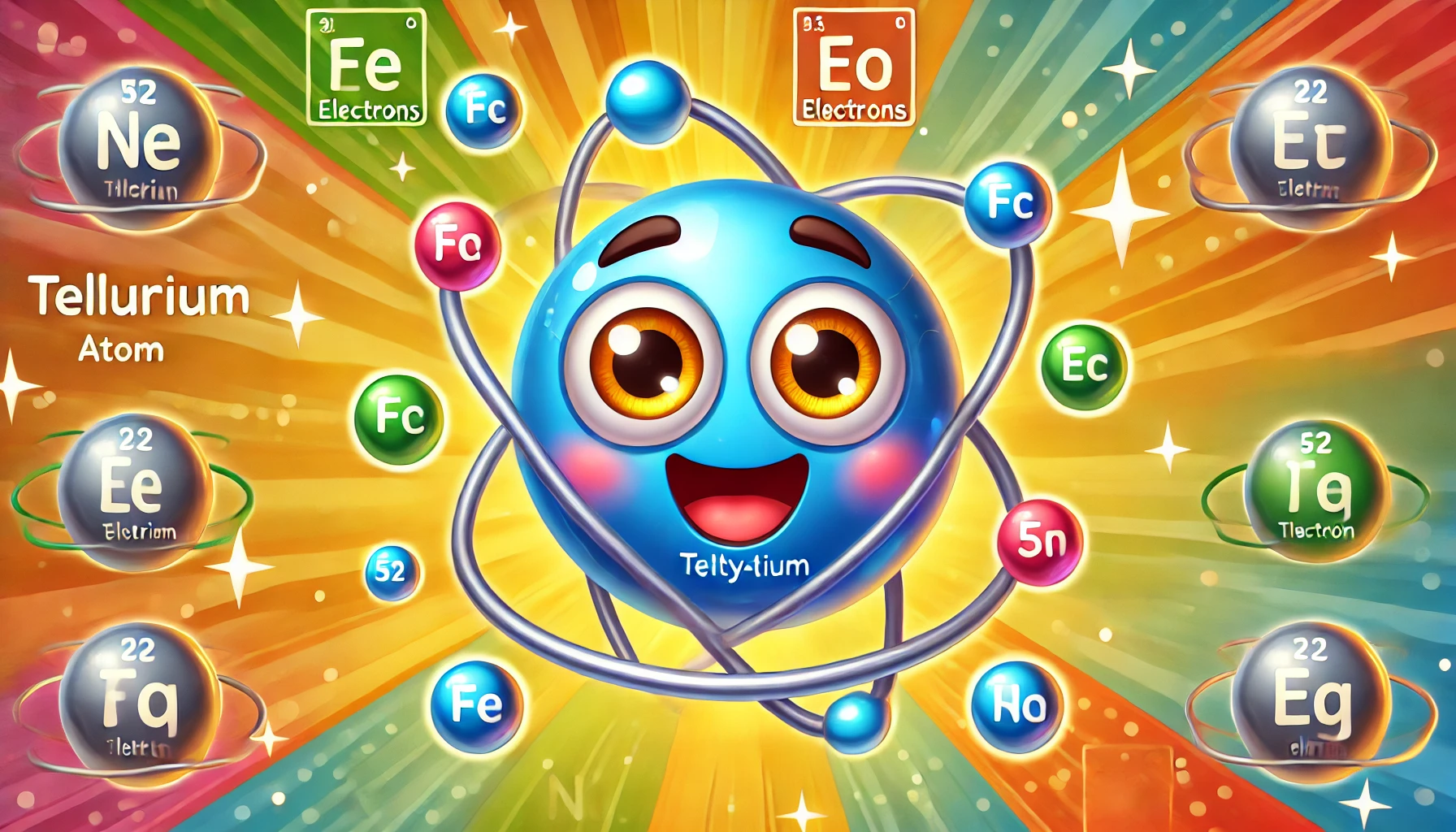Understanding Tellurium: Properties, Uses, Health Risks, and Fascinating Facts
Understanding Tellurium: Properties, Uses, Health Risks, and Fascinating Facts
Table of Contents
- Introduction to Tellurium
- Properties of Tellurium
- Uses of Tellurium
- Health Risks of Tellurium Exposure
- Interesting Facts about Tellurium
- Environmental Impact of Tellurium
- Conclusion
- References
Understanding Tellurium: Properties, Uses, Health Risks, and Fascinating Facts
Introduction to Tellurium Tellurium is a chemical element with the symbol Te and atomic number 52. It is a rare, brittle, silvery-white metalloid that shares properties with both metals and non-metals. Tellurium is known for its semiconductor properties and is used in various high-tech applications. This article explores the properties, uses, health risks, and interesting facts associated with tellurium, providing a comprehensive understanding of this unique element.
Properties of Tellurium Tellurium is characterized by several distinct physical and chemical properties.
Physical Properties
- Appearance: Tellurium is a brittle, silvery-white metalloid with a metallic luster.
- Density: The density of tellurium is 6.24 g/cm³.
- Melting Point: Tellurium has a melting point of 449.5°C (841.1°F).
- Boiling Point: The boiling point of tellurium is 988°C (1,810°F).
Chemical Properties
- Reactivity: Tellurium is chemically similar to selenium and sulfur. It is relatively stable but reacts with halogens and strong acids.
- Compounds: Tellurium forms various compounds, such as tellurium dioxide (TeO₂), tellurium tetrachloride (TeCl₄), and tellurium hexafluoride (TeF₆).
Uses of Tellurium Tellurium has numerous applications across different industries due to its unique properties.
Electronics and Solar Cells
- Semiconductor Devices: Tellurium is used in the production of semiconductor devices due to its ability to conduct electricity. It is often used in thermoelectric devices that convert heat into electrical energy.
- Solar Panels: Cadmium telluride (CdTe) is used in thin-film solar panels, which are an efficient and cost-effective way to produce solar energy.
Metallurgy
- Alloys: Tellurium is added to copper and stainless steel alloys to improve their machinability and corrosion resistance. Tellurium-copper alloys are used in the manufacturing of electrical connectors and switches.
Optoelectronics
- Optical Devices: Tellurium is used in the production of optical storage media, such as CDs, DVDs, and Blu-ray discs. It is also used in infrared detectors and other optoelectronic devices.
Chemical Industry
- Catalysts: Tellurium compounds are used as catalysts in various chemical reactions, including the vulcanization of rubber and the production of synthetic fibers.
Health Risks of Tellurium Exposure Tellurium can be toxic in certain forms and concentrations, and exposure to tellurium compounds can pose health risks.
Inhalation and Ingestion
- Respiratory Issues: Inhalation of tellurium dust or fumes can cause respiratory irritation, coughing, and a condition known as “tellurium breath,” which has a garlic-like odor.
- Gastrointestinal Issues: Ingestion of tellurium compounds can cause gastrointestinal irritation, including nausea, vomiting, and a metallic taste.
Skin and Eye Contact
- Skin Irritation: Direct contact with tellurium compounds can cause skin irritation and dermatitis.
- Eye Irritation: Exposure to tellurium dust or solutions can cause eye irritation and potential damage.
Chronic Exposure
- Organ Effects: Prolonged exposure to high levels of tellurium compounds may affect the liver, kidneys, and nervous system.
Interesting Facts about Tellurium Tellurium has several intriguing aspects that make it an interesting element.
Discovery
- Discovered in 1782: Tellurium was discovered by Austrian mineralogist Franz-Joseph Müller von Reichenstein in 1782 while examining gold ores. It was later named by German chemist Martin Heinrich Klaproth after the Latin word “tellus,” meaning Earth.
Unique Properties
- Garlic Odor: Tellurium compounds can cause a garlic-like odor in the breath and sweat of individuals exposed to it, known as “tellurium breath.”
- Rare Metalloid: Tellurium is one of the rarest metalloids in the Earth’s crust, making up about 0.0001% of its composition.
Isotopes
- Stable Isotopes: Tellurium has eight naturally occurring stable isotopes, with tellurium-130 and tellurium-128 being the most abundant.
- Radioactive Isotopes: Several radioactive isotopes of tellurium are known, including tellurium-123m, which is used in nuclear medicine.
Environmental Impact of Tellurium Tellurium is not known to have significant environmental impacts, but its extraction and use should still be managed responsibly.
Natural Occurrence
- Abundance: Tellurium is relatively rare in the Earth’s crust and is typically found in ores containing other metals, such as copper, gold, and lead.
- Mining: Extraction of tellurium must be done carefully to avoid environmental contamination and ensure sustainable practices.
Industrial Waste
- Waste Management: Proper disposal of tellurium-containing industrial waste is crucial to prevent environmental contamination.
Conclusion Understanding tellurium, its properties, uses, health risks, and interesting facts provides valuable insight into this unique metalloid. While tellurium has several important industrial applications, its toxicity requires careful handling and management to minimize health and environmental risks. Its applications in electronics, metallurgy, optoelectronics, and the chemical industry highlight its importance in modern technology and industry.

<ⓒ WizardMedics (wizardmedics.com)>






